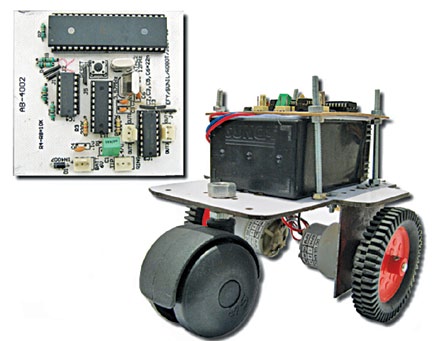Citing network connectivity, multimedia and community as the top three factors that make Raspberry Pi best suited for DIY projects, Eben Upton, executive director of the Raspberry Pi Foundation, explains, “There aren’t many devices that let you connect to wired Ethernet for $35. Also, the chip we use in the Pi was originally intended as a mobile phone graphics accelerator, so people wanting to do things that connect to a screen, play video or render 3D graphics find it ideal. We have sold over 1.5 million Raspberry Pi’s, so we have a massive community that people can tap if they want help in bringing their creation to life.”
Regarding the desirable features in a Pi, he says, “I think a lot of people in the DIY world would like analogue input, more GPIOs and Wi-Fi. The first two are served quite well by connecting an Arduino via USB. As for Wi-Fi, there are a lot of wireless dongles you can use with the Pi. We are considering to incorporate some of these features on a future board, but we need to be careful: Part of the reason for the Pi’s very low price is that we’ve been careful not to add more than is absolutely necessary to the board.”
[stextbox id=”info” caption=”Boards to consider”]• Arduino
• Raspberry Pi
• MSP430 Launchpad
• Beagleboard
• Stellaris
• Telos B
• EFM32[/stextbox]
[stextbox id=”info” caption=”Tools needed”]• Soldering iron
• Breadboard
• Wire stripper
• Multimeter
• Oscilloscope
• A 3D printer (if you can afford it or invest in it as a group)[/stextbox]
Listing the top reasons for Arduino’s popularity in the DIY world, Kuber says, “Arduino is popular because it was one of the pioneers in the open source hardware domain. I would credit the widespread popularity to the fact that it has a great founding team. They had all the elements to make this project a success—a robust hardware design, an experienced professor taking care of documentation, a software person to write an easy-to-use IDE and an efficient manufacturer. Furthermore, the active forums and the hand-to-hand customer support have brought Arduino this far. It invited developers of all experience levels—novices to professionals to hobbyists. Every person working for Arduino answers support queries in the mailing lists, be it the CEO of Turin office, or India office or the creator of Arduino himself! If the problem goes too vast, and if it is found to be common, we would then point it to the forums. As far as tutorials and workshops in India are concerned, we are working to organise them in a more hands-on orderly manner.”

Kuber also discusses things on DIY users’ wishlists: “People usually compliment the robustness of Arduino. However, some of them want to take insurance on the pins, which is currently not provided. Another complaint is generally regarding the IDE, but the people who complain over that are mostly advanced software engineers. Considering the masses, the most ‘wanted’ feature in India at least is the drop in price.”
Learn and collaborate
There are excellent learning resources for DIYers these days (see box on next page for online resources). From step-by-step instructions to videos showing how to go about a project, from basic conceptual learning resources to discussion forums, you have several avenues for getting your doubts cleared at any stage of your project.
Concerning IoT DIY, Kashinath says, “In terms of learning, obviously the best entry point is a Google search, as there are several tutorials, videos and communities dedicated to IoT on the Web. There are also some good books on the subject and some course material from universities teaching IoT. In India, since many of our challenges are unique to us, the global forums may not have the answers we seek. So one of the best resources you can get is a local group of enthusiasts who can work and learn together. Most cities should already have local groups. If you are in Bengaluru, join IoTBLR. If there is no such group in your city, why not start one?”
Sarafan also recommends Google search. “Honestly, I am partial to Google image search. Simply search for whatever you are trying to build and throw the word ‘schematic’ at the end. You should visually get lots of useful information quickly,” he explains.
Above all this, it is the ‘community’ that makes DIY possible—and the key factor that sets today’s DIY scenario far ahead of the yesteryears.’ (See box ‘No DIYian is an Island.’)










